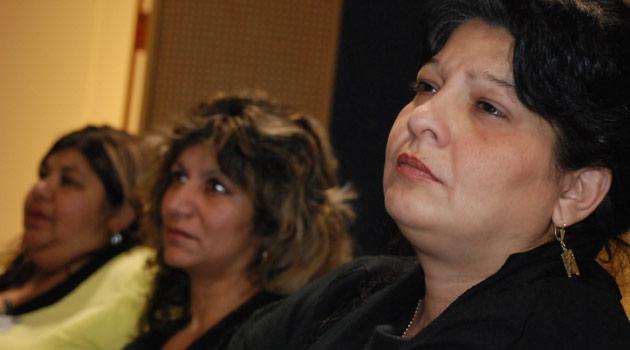Gwendolyn Albert: The long train ride to justice for forcibly sterilized women

It has been more than 10 years since I first learned of the forced sterilization of women in the former Czechoslovakia and how it was still continuing in the 21st century. It is now almost 10 years since I first met Elena Gorolová and many of the other women to whom this actually happened. When I imagine what their journey toward justice has been like, I picture them all on a train ride. Sometimes the train abruptly stops on the tracks, but no one never explains to the passengers – or the rest of us – when exactly the doors are going to open.
The recent decision by the Czech Government not to compensate these women was just such a moment – the brakes of that train came screeching to a halt. Sometimes when that happens it means someone gets to disembark (usually only one at a time). The law brought forward by Human Rights Minister Dienstbier was like a pretty good key for letting all of the passengers out. Unfortunately, the Government has decided not to use it for now.
The Czech Republic is not the only place where women have had their rights violated in this way. This has happened all over the globe. The story varies from place to place in terms of details, but from a human rights perspective these abuses are the same, as the United Nations Special Rapporteur on Torture made clear in 2013, and as seven UN agencies made jointly clear last year. Coercing or forcing someone into being sterilized is an inhumane, unacceptable method of social control that violates the dignity of the individual.
In the past we have had the good luck to see some of the passengers let off this train. Those are the handful of forcibly sterilized women who were given “lucky tickets” – they were able to get lawyers and complain in time. The conductor released them onto special platforms just for one person, built for them by the courts. They were free to go.
There are hundreds of women on this train – in fact, the farther back one looks down the track, the more cars one sees. Speaking of the many women to whom this has happened since 1960 on the territory of all of the former Czechoslovakia, former ombud JUDr Otakar Motejl told the Czech press before he passed away that the number could be as high as 90 000.
These women did not get on this train of their own free will. The state built the whole system, and only the state has the power to unlock the doors and let them out. Of course, the state has not kept track of how many people were ever pushed onto this train to begin with. It doesn’t know how many women have been sterilized against their will. That is not the passengers’ problem, though. It is the state’s.
Indeed, some of the passengers, like Elena Gorolová, have been trying to stand up and be counted for years, to count the others around them, and to get the message to the conductor of the train about how many little “platforms for one” are needed to empty the train. It’s not easy to move between the compartments of this train, though, or to communicate outside of it.
The Czech Republic is no stranger to compensation processes. The country has compensated churches for expropriated property seized by the communist regime. It has compensated members of the anti-communist movement for their suffering. The Czech and Slovak Federative Republic compensated persons who were interned in forced labor camps during military service because of their alleged political unreliability.
In 2009 the Czech Government issued a general apology to the victims of forced sterilizations. This was like announcing to the passengers over the loudspeaker: “Sorry someone gave you all this train ticket” – even as the doors stayed shut. And to whom should these passengers complain about being stuck when no one will even look them in the eye?
As far as we know, the main objection to dealing with this train is that the Czech state doesn’t know how many people are on it and how expensive it will be to let them out, how many “platforms for one” it will have to build. There is only one way to figure this out: Look inside the train you built and count them.
The plan recently submitted to the Government was not perfect. Having the Health Ministry administer it, for example, was probably not the ideal solution. However, it would have been an enormous step forward toward releasing the passengers – and the conductor, and all of us watching this journey – from this excruciating ride.
These women have suffered a torture that should certainly be considered equivalent to, if not incomparably more important than, the need to restore expropriated property to its owners. This train ride needs to end safely, with justice for every single one of the passengers.